Indulge in the rich and aromatic flavors of Kaapi, also known as filter coffee, the most common and beloved beverage in South Indian households. For many South Indians, a strong cup of filter coffee is an essential part of their daily routine.
Made with a special blend of coffee and chicory, brewed using a traditional metal filter pot, and served with frothy hot milk in a steel tumbler and davara, Kaapi is a true delight.
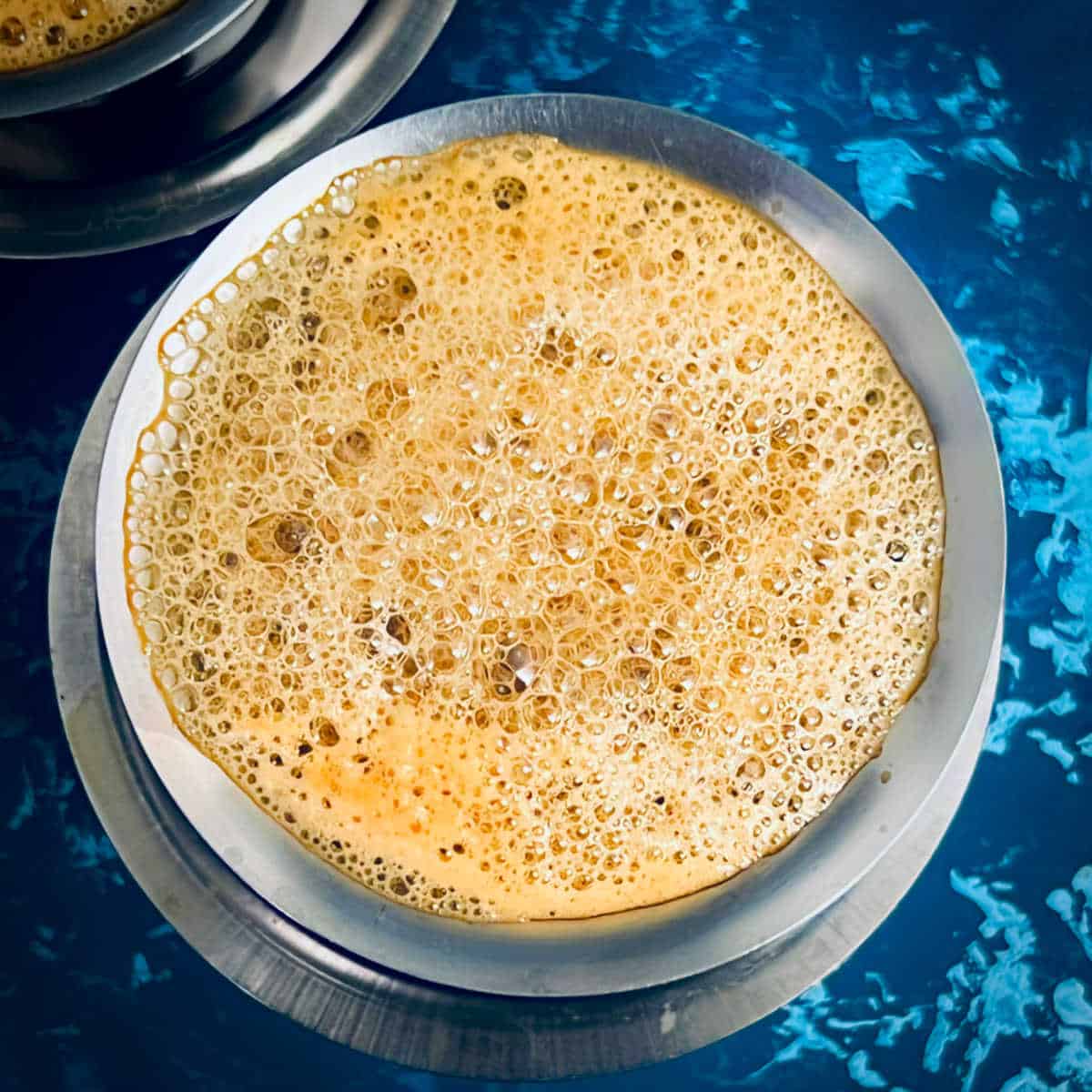
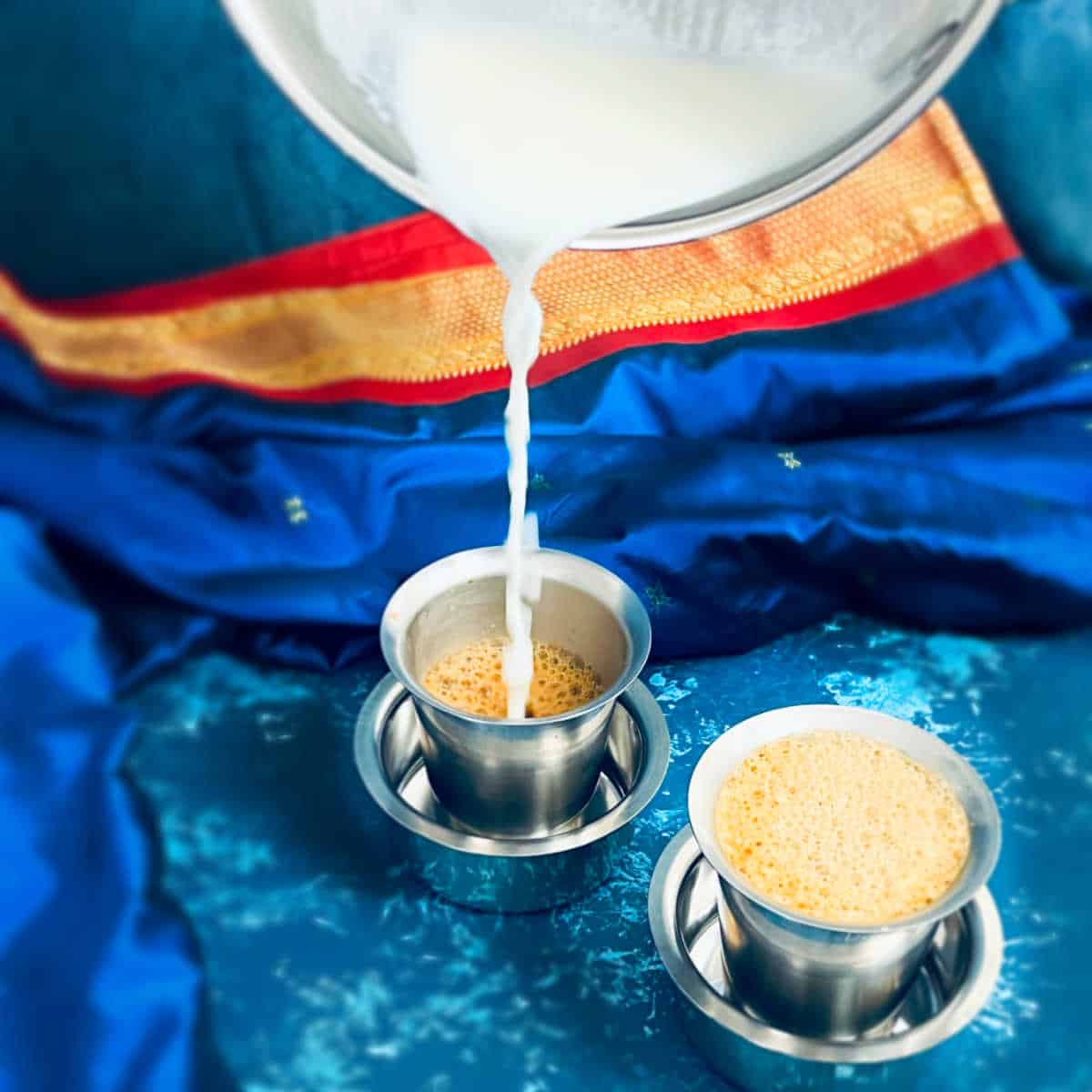
Kaapi has been a staple in South Indian households long before the rise of café culture and is known by different names such as Mysore filter coffee, Madras kaapi, or Kumbakonam coffee. While Indian spiced tea, or chai, is widely popular, South Indian filter coffee is second to none.
As a coffee aficionado, I, like many South Indians, start my day with a strong cup of Kaapi. It's a cherished part of our daily routine and is enjoyed throughout the day in all seasons.
Unveiling the Best Aspects of Kaapi
- South Indian filter coffee is known for its strong and intense flavor, resulting from the unique brewing process that involves extracting a strong decoction from coffee powder.
- Chicory, a root of the endive plant, is commonly added to South Indian filter coffee to enhance its flavor and aroma. It adds a slightly bitter and earthy note to the coffee.
- Kaapi has been a part of South Indian households for generations and is deeply ingrained in the daily routine and lifestyle of the people. It is often shared as a sign of hospitality and is considered an essential part of social gatherings and festivals.
Traditional coffee filter pot
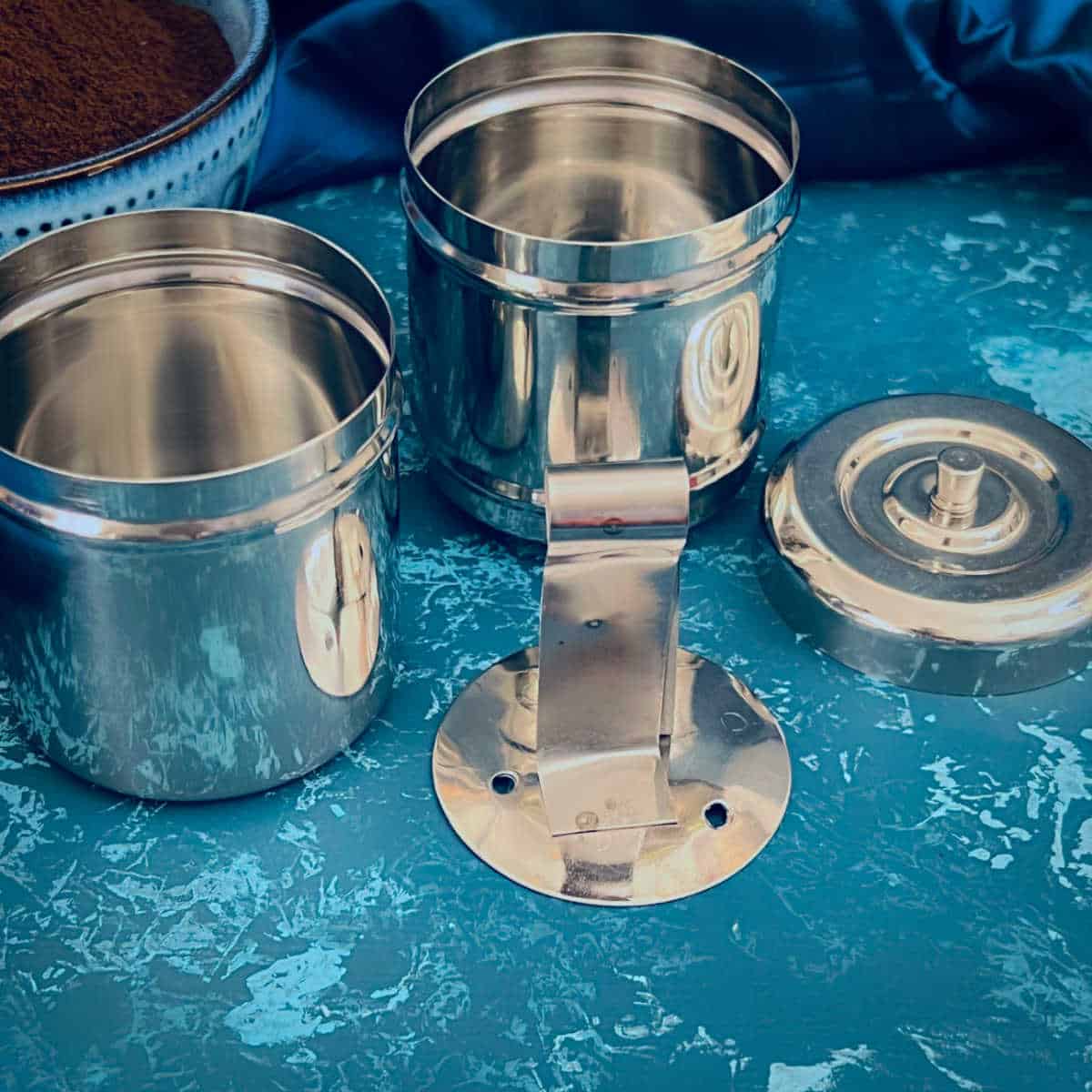
Traditionally, South Indian filter coffee is brewed using a special steel filter pot known as a "coffee filter" or "coffee percolator." It has two main parts (or compartments) - one for adding coffee powder and hot water and the other for collecting the decoction. The freshly brewed decoction is then mixed with hot milk and served in a steel tumbler and davara (bowl), adding to its distinct charm and flavor.
This traditional filter follows a pour-over style of filtration and is probably the easiest to use. It does not need filter paper. A plunger is placed on the coffee powder and is pressed gently. Hot water seeps through the coffee, and the concentrated liquid called coffee decoction can be collected.
Ingredients
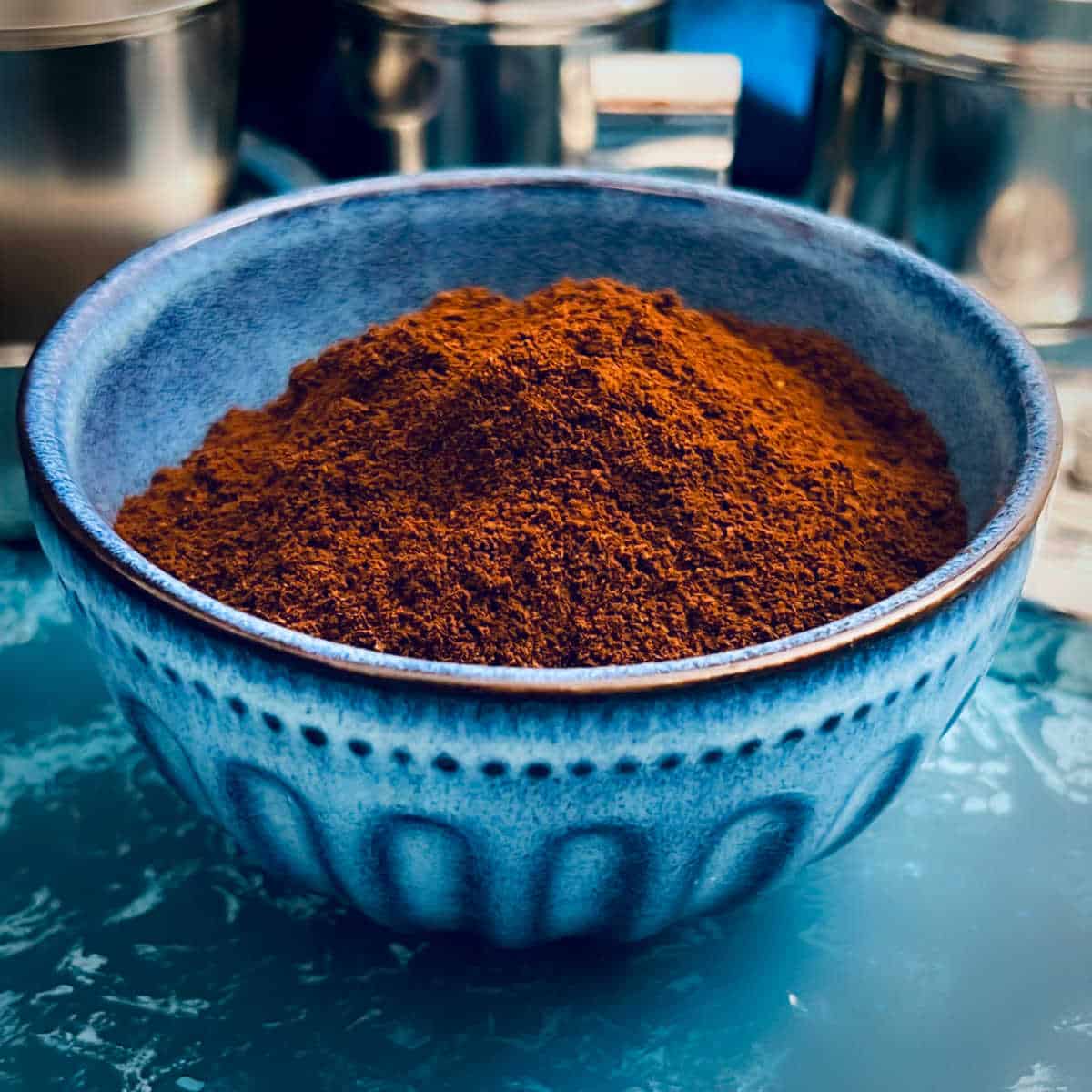
Coffee Powder: There are several brands of Indian coffee powders that can be bought from any Indian grocery store.
Other ingredients: Hot water, whole milk, and sugar.
How to make South Indian Coffee
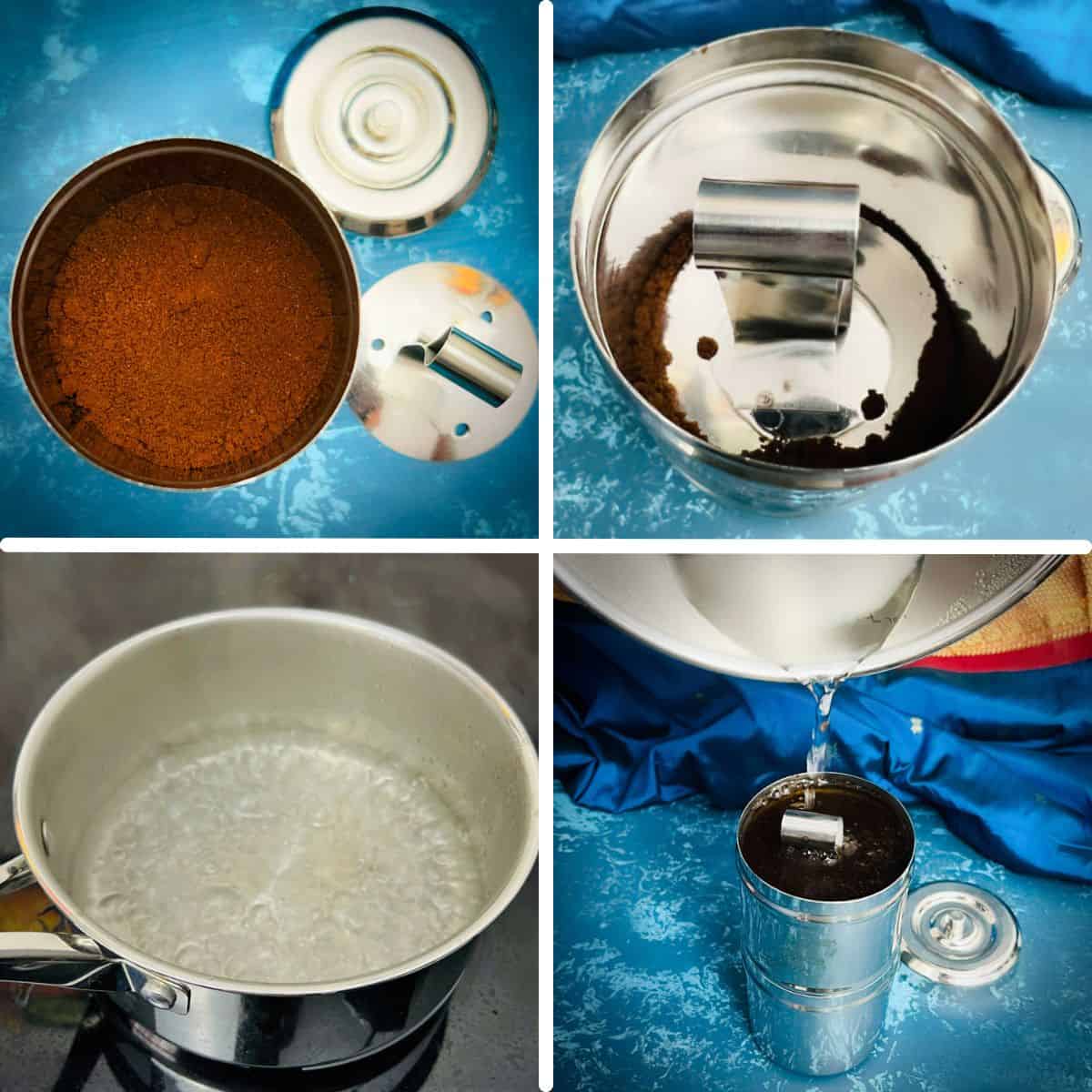
Step 1: Assemble the top and bottom compartments of the coffee filter pot. Add the coffee powder to the top compartment. Put the disc (plunger) on top of the coffee powder and press gently.
Step 2: Take water in a saucepan and bring it to a rolling boil. Carefully pour boiling water on the disc in a thin stream.
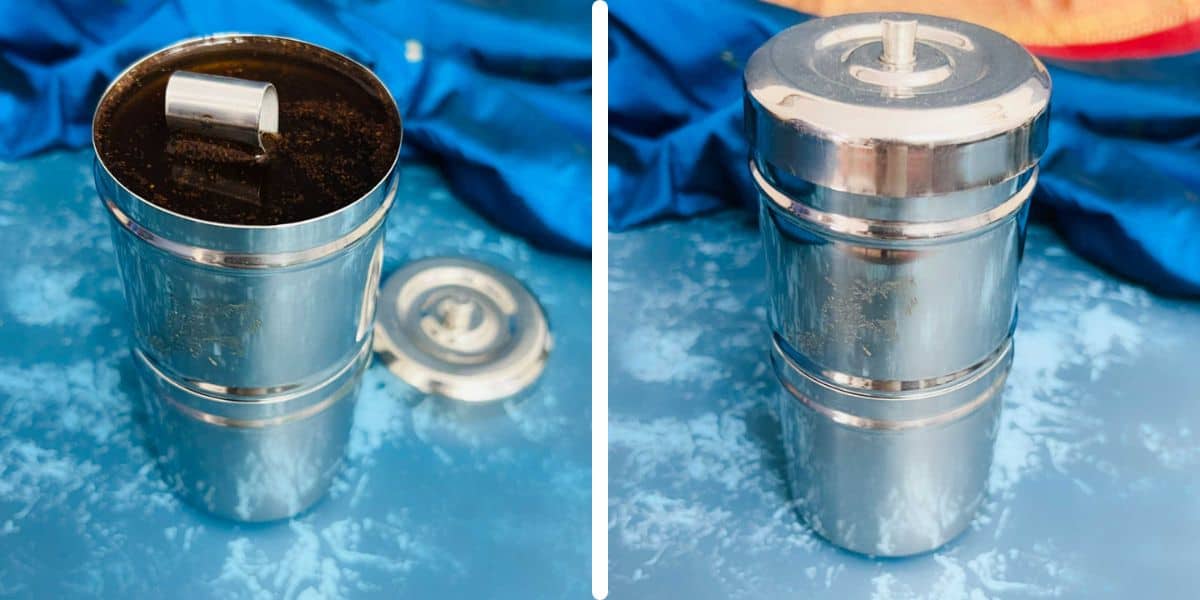
Step 3: Cover the lid of the filter pot, and the decoction will brew and drip slowly to the lower compartment. This will take 10-15 minutes.
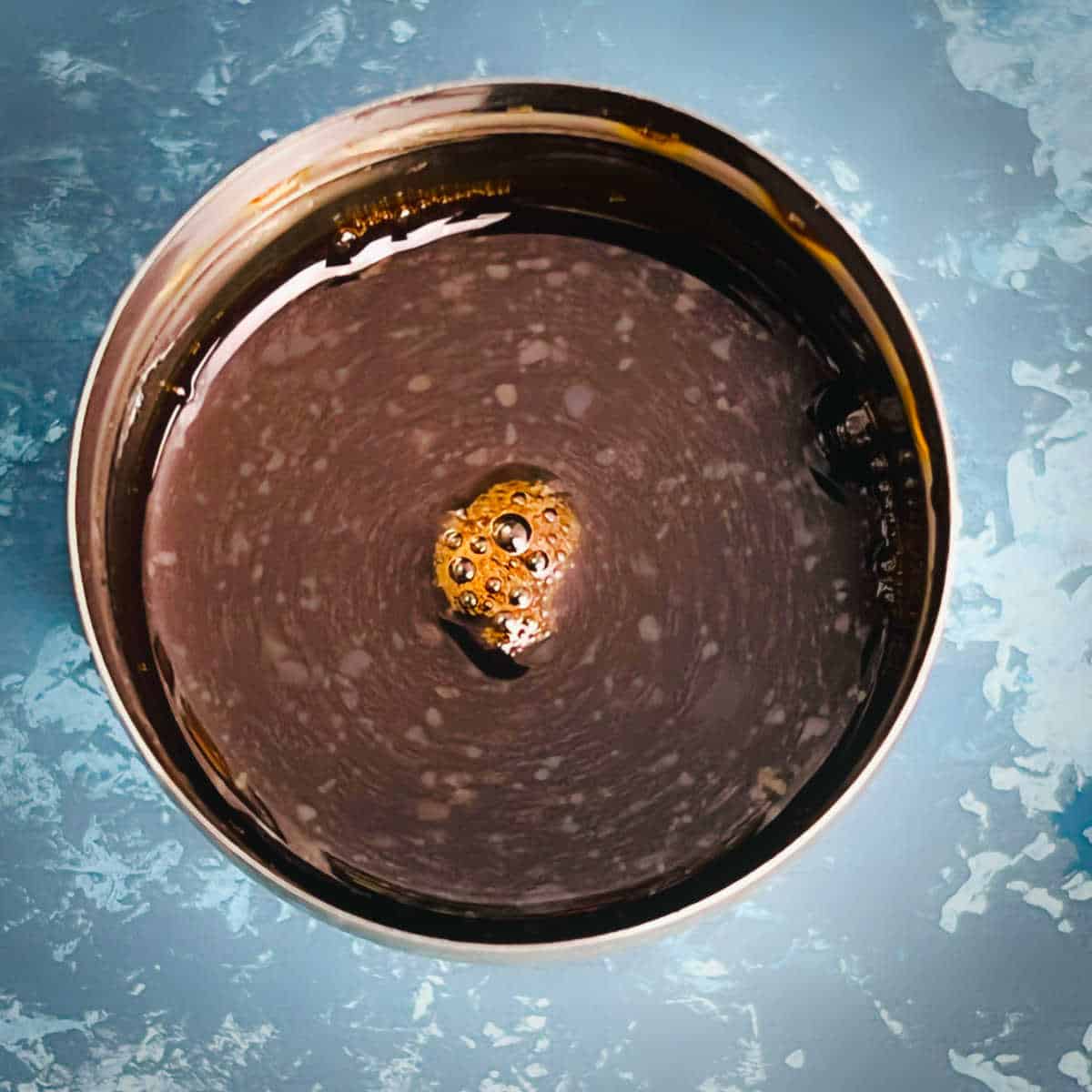
Step 4: The water will drip from the top compartment, and the decoction is collected in the lower compartment of the filter pot.
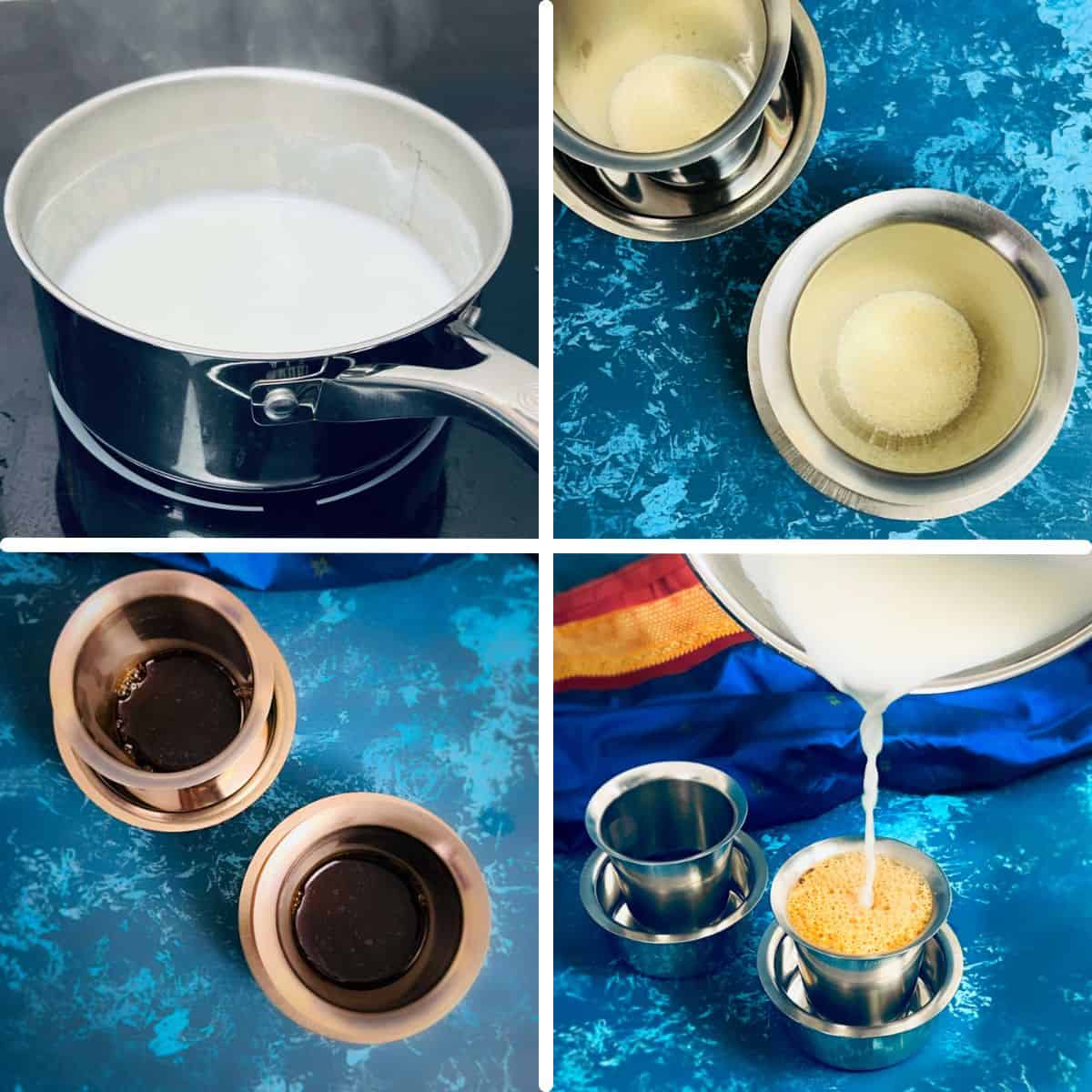
Step 5: Take milk in a saucepan and bring it to a rolling boil. Turn off the heat.
Step 6: Take two tumblers (or cups) and add one teaspoon of sugar to each tumbler. Add the required amount of decoction (3-4 tablespoons, depending on preference). For a lighter coffee, add less decoction, and for a strong coffee, add more. Pour hot milk into the tumbler in a thin stream. Pull the coffee a few times to make it frothy before serving.
Pulling the coffee
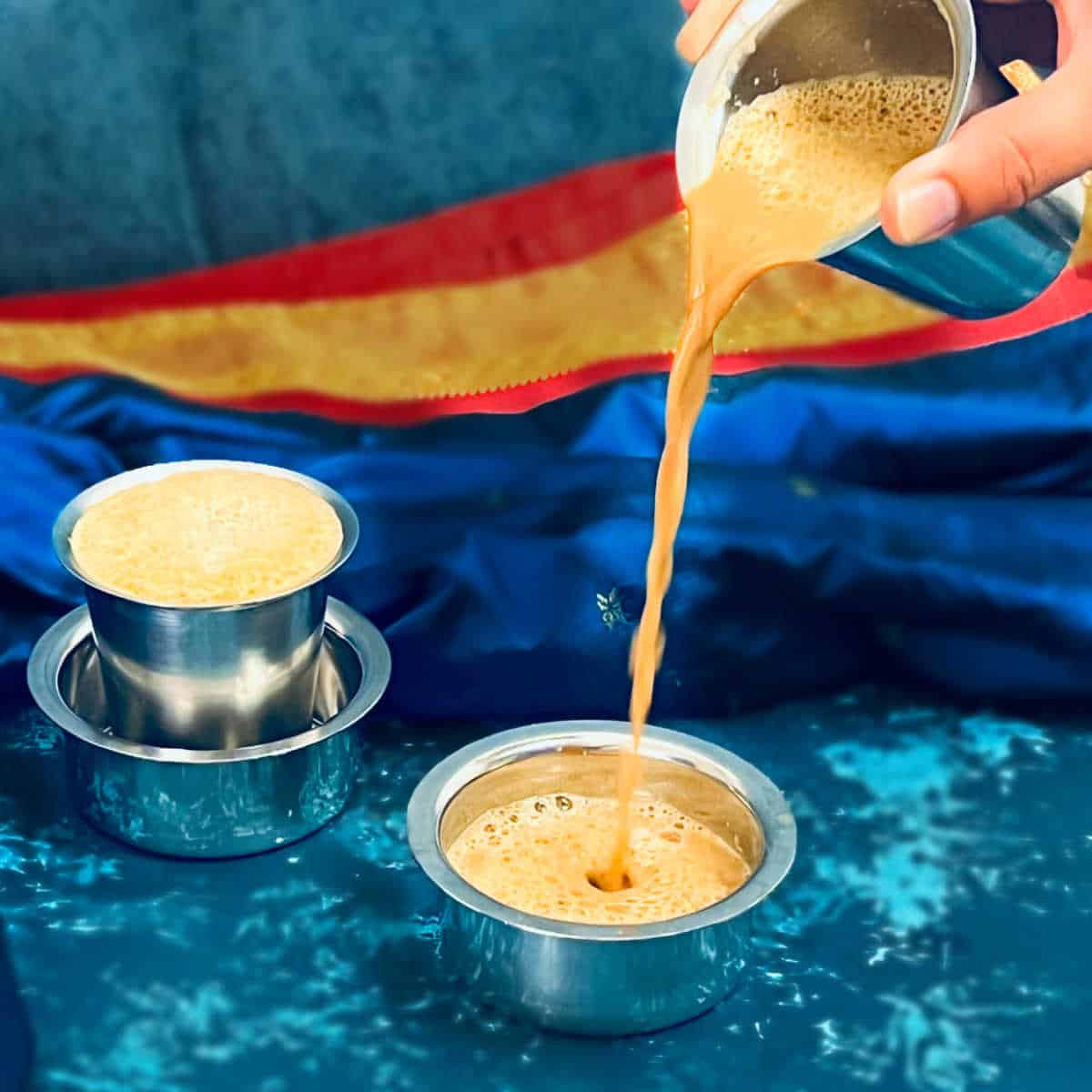
Filter coffee is traditionally served in a small steel glass with a bowl (called davara) under it. The coffee is "pulled" back and forth between the tumbler and bowl. This makes the coffee frothy and also helps the sugar to dissolve.
To pull the coffee, pour it from the tumbler/glass to the davara/bowl in a slow stream. Then, pour it back from the davara into the tumbler. Repeat the process of pouring it back and forth 5-6 times until there is a foamy head on the top.
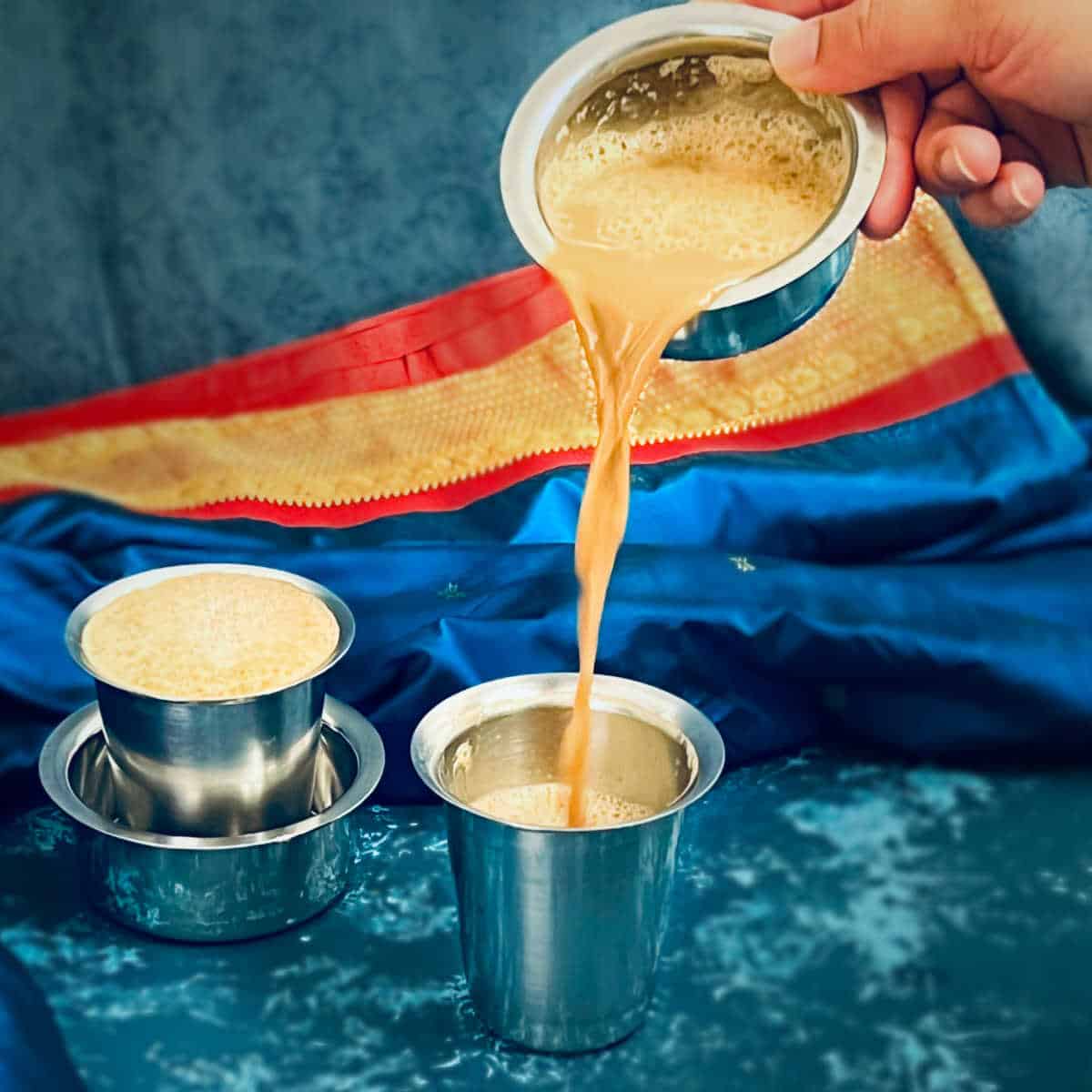
Expert Tips
When placing the disc (plunger) in the filter pot, do not apply a lot of pressure. Place the disc and press gently to flatten the powder. If you press too hard, the decoction will take a long time to steep.
Do not heat the decoction over direct heat, as it changes the taste and makes the coffee bitter. To reheat any leftover decoction, place it in a tumbler and put it in hot water for a few minutes.
Serving suggestions
Filter kaapi is the perfect pair with South Indian breakfast dishes like upma, idli, and masala dosa. Check out more Indian breakfast recipes that are perfect with a cup of coffee.
Serve your evening kaapi with evening snacks like Mangalore buns, onion pakora, and veg puffs.
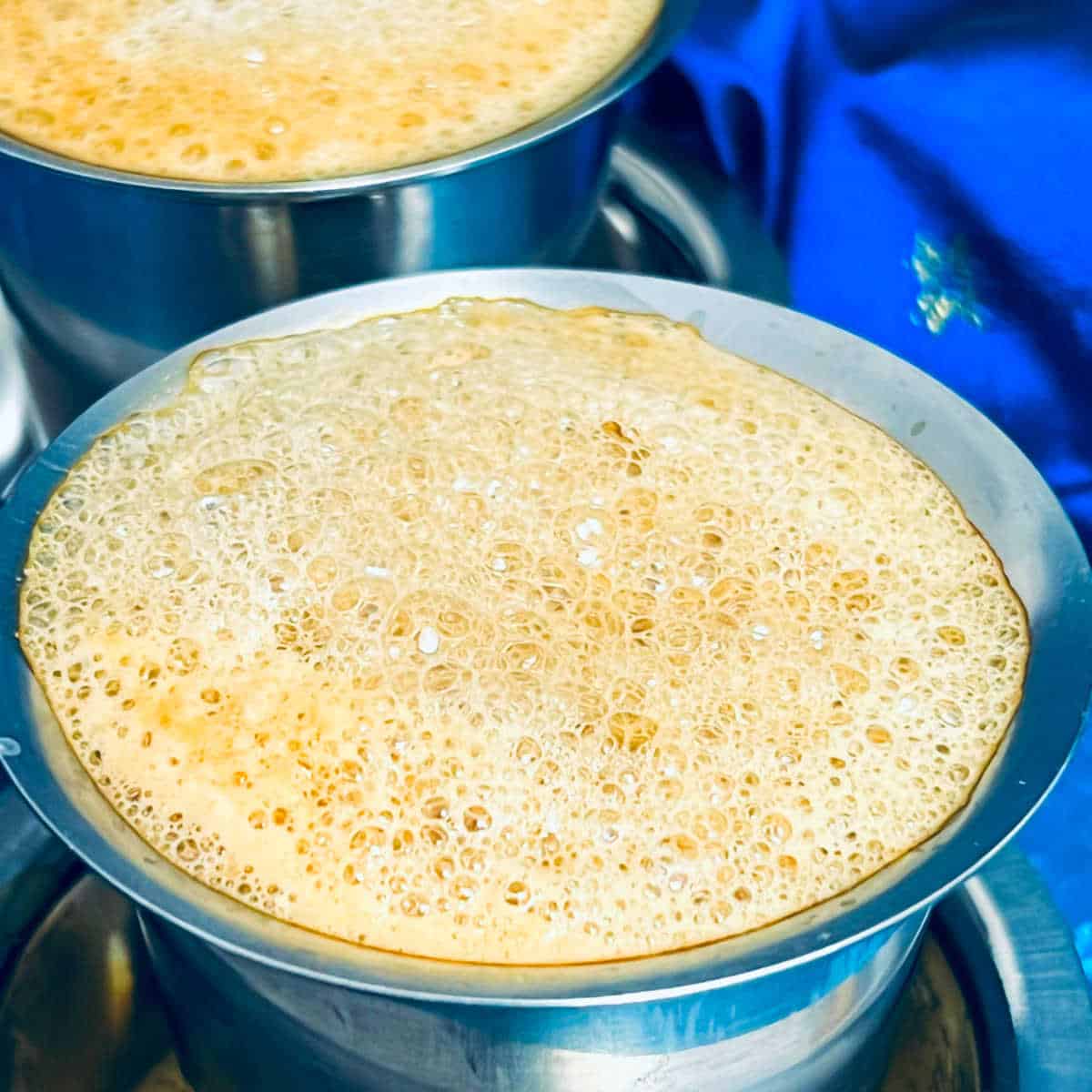
Recipe FAQs
Chicory is a common addition to South Indian coffee, contributing a malty flavor and deeper color when combined with coffee beans. Originating from the root of a plant native to Asia and Europe, chicory is roasted, ground, and blended with coffee powder. In South India, coffee shops roast, grind, and mix coffee beans with roasted chicory in varying proportions, often with a 10% chicory content, though this can be adjusted to personal taste.
Traditionally, regular whole milk is used; however, plant-based milk like soy milk and oat milk can also be used. If you use vegan milk, do not boil it. Just heat the milk gently and add it to the decoction.
No. While both use a pour-over filtration technique, the filter pot and coffee powder used are different. Also, milk and sugar are added to the filter kaapi.
Kattan kaapi is a diluted brew of coffee and is widely popular in the Kerala region. It does not have milk or sugar and is served black. Kattan is very similar to Americano, albeit made with Indian coffee powder.

More Indian beverages
If you tried this Authentic South Indian Filter Coffee / Kaapi Recipe or any other recipe on my website, please leave a ? star rating and let me know how it went in the ? comments below.
Recipe card
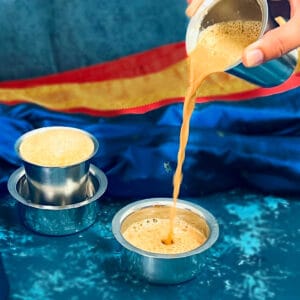
Filter Coffee / Authentic South Indian Kaapi
Ingredients
- 3 tablespoon coffee powder
- ¾-1 cup water (depending on the size of the filter pot)
- 1½ cups whole milk
- 2 teaspoon sugar (adjust as per taste)
Instructions
Making the decoction:
- Assemble the top and bottom compartments of the coffee filter pot. Add the coffee powder to the top compartment.
- Put the disc (plunger) on top of the coffee powder and press gently.
- Meanwhile, take water in a saucepan and bring it to a rolling boil.
- Carefully pour boiling water on the disc in a thin stream.
- Cover the lid of the filter pot and the decoction brew and drip slowly to the lower compartment. This will take 10-15 minutes.
- The water will drip from the top compartment and the decoction is collected in the lower compartment of the filter pot.
Making Kaapi:
- Take milk in a saucepan and bring it to a rolling boil. Turn off the heat.
- Take two tumblers (or cups) and add one teaspoon of sugar to each tumbler.
- Add the required amount of decoction (3-4 tablespoons depending on preference). For a lighter coffee, add less decoction and for a strong coffee, add more.
- Pour hot milk to the tumbler in a thin stream.
- Pull the coffee a few times to make it frothy by pouring it back and forth in the tumbler and davara (bowl).
- Serve hot immediately.
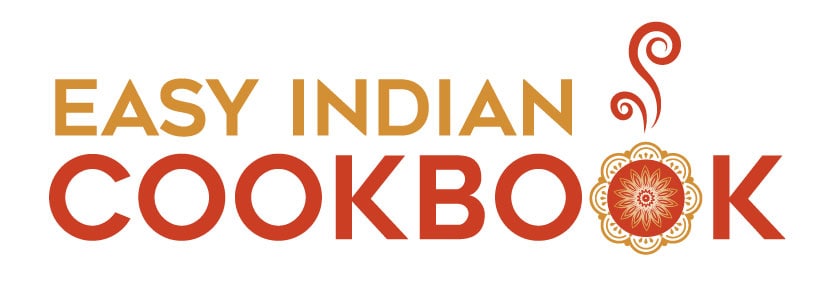
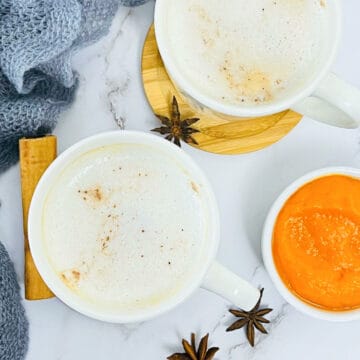
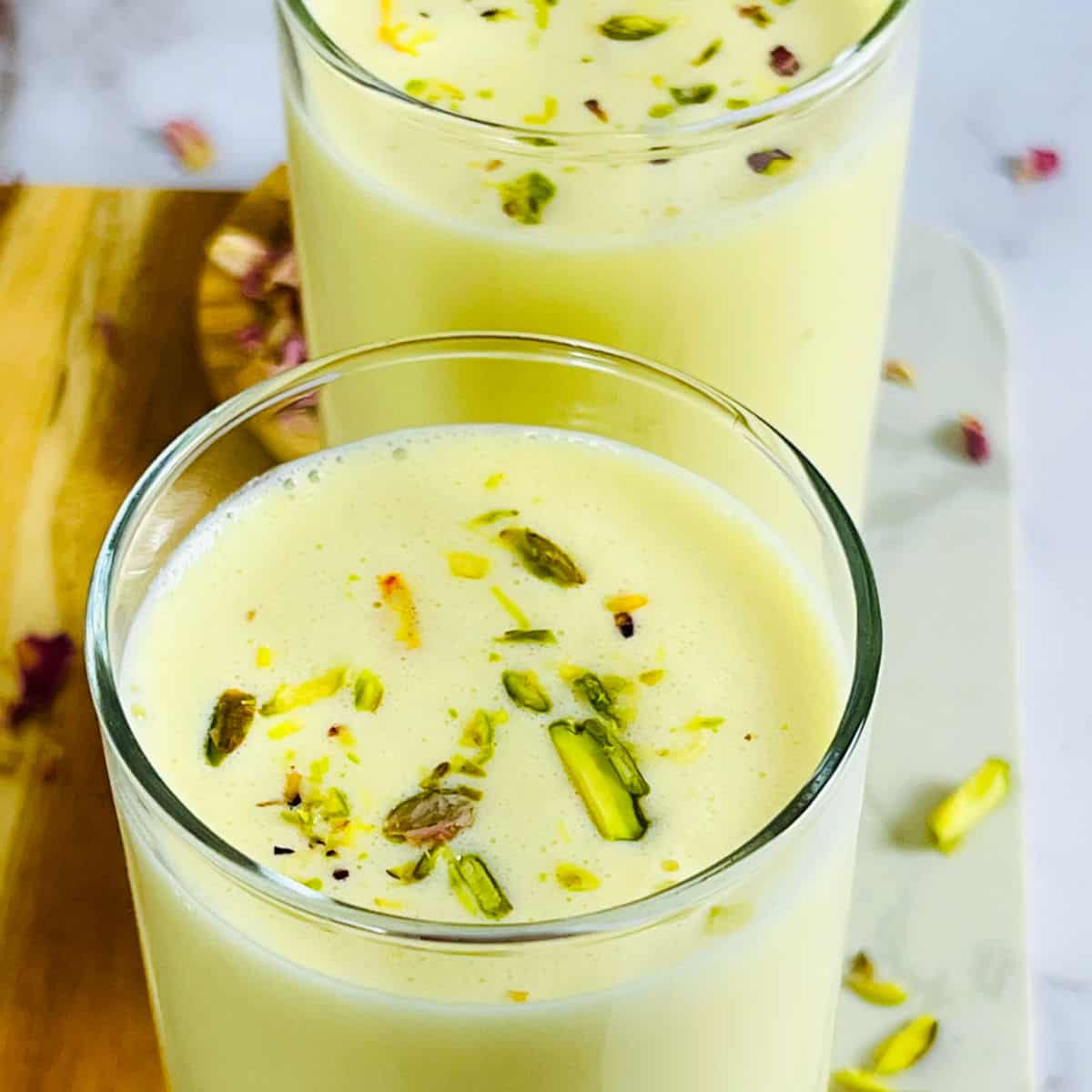
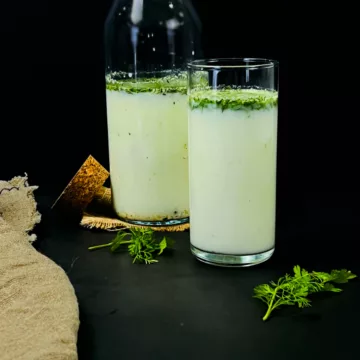
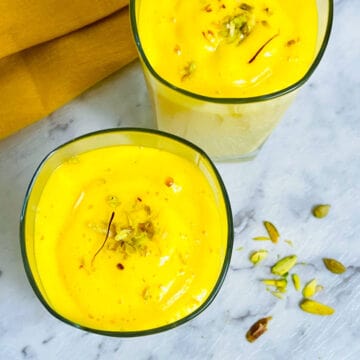
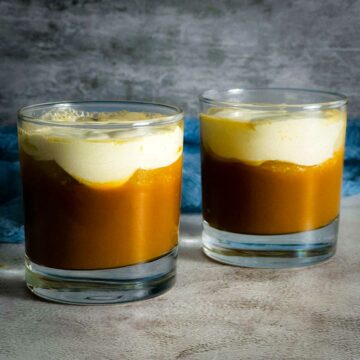



Lauren says
Love this recipe!
Shilpa says
Thank you so much, Lauren.